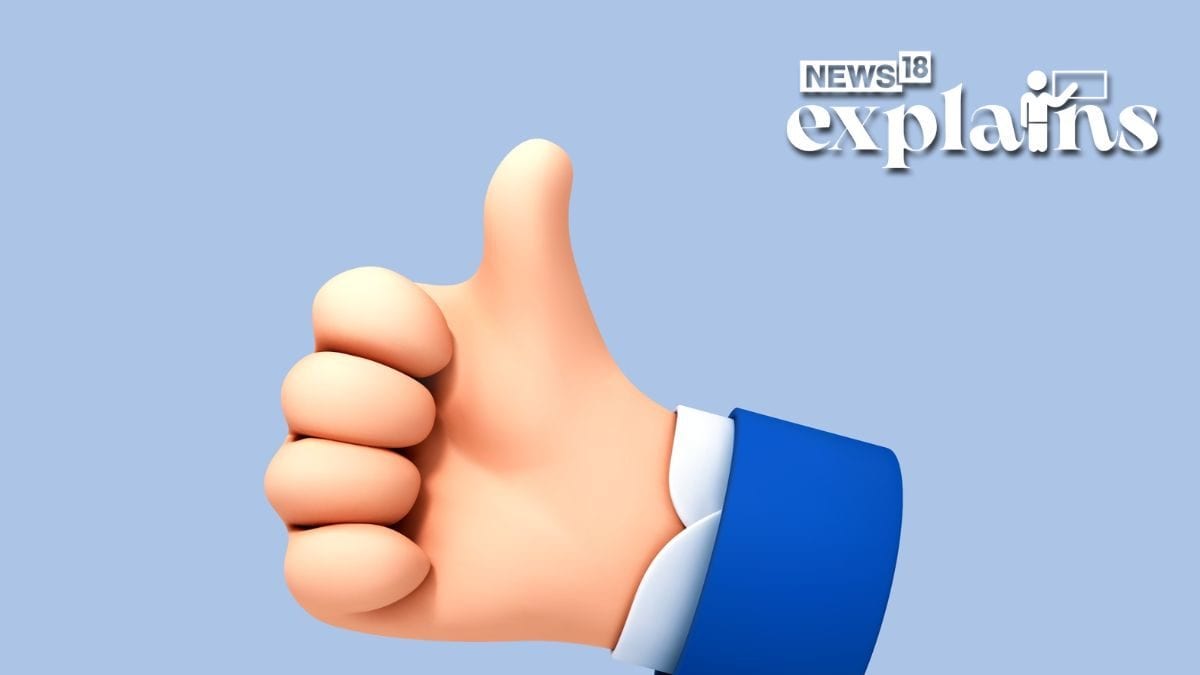Use Your Emojis Carefully? Man Lands in Trouble Over ‘Thumbs Up’ Reply to Contract | Explained – News18
In a recent case in the Court of King’s Bench in Saskatchewan, Canada, a judge ruled that the use of a “thumbs-up” emoji can be considered a valid form of signature.
The judge emphasized the need for courts to adapt to the changing ways people communicate, as per a report by The Guardian.
The ruling came as a farmer, Chris Achter, was ordered to pay C$82,000 ($61,442) for failing to fulfill a contract with grain buyer South West Terminal. The case revolved around a mass text message sent by the buyer, Kent Mickleborough, advertising the purchase of 86 tonnes of flax at a specific price.
Mickleborough spoke with Achter over the phone and sent a picture of a contract, asking the farmer to confirm the flax contract by replying with the message.
What Happened in the Case?
Achter, residing in Swift Current, responded to Mickleborough’s text with a thumbs-up emoji. However, he did not fulfill the contract by delivering the flax in November.
The interpretation of the emoji became a point of dispute between Mickleborough and Achter. The buyer argued that the previous contracts confirmed by text message implied that the thumbs-up emoji indicated acceptance of the contract’s terms. On the other hand, Achter claimed that the emoji only signified that he had received the contract and had not accepted its terms.
During the proceedings, Achter’s lawyer objected to cross-examining his client on the meaning of the thumbs-up emoji, stating that Achter was not an expert in emojis, the report by the Guardian said.
Justice Timothy Keene, in his ruling, expressed frustration that the case led to extensive research into the meaning of the thumbs-up emoji, including references to cases from various jurisdictions.
Nevertheless, Keene acknowledged that while a thumbs-up emoji is an unconventional way to “sign” a document, it was a valid method in this particular context to convey the two purposes of a signature.
Furthermore, Keene dismissed concerns raised by the defense about the potential for other emojis, such as the fist bump or hand shake, to be similarly interpreted in future cases. He stated that the court should not attempt to impede the progress of technology and the common usage of emojis, as this new reality is apparent in Canadian society.
What are Emojis?
The origin of emojis can be traced back to the 1990s when simple emoticons like ???? and ???? were used in early chatrooms to convey emotions or sarcasm, as per a report by Galvanize. However, the designer Shigetaka Kurita is credited as the pioneer of modern-day emojis. In 1999, the Japanese cell phone company NTT DOCOMO released a set of 176 emojis for mobile phones and pagers.
The term “emoji” is a combination of two Japanese words, meaning “picture” and “letter,” although it coincidentally sounds similar to the English word “emotion.” Kurita drew inspiration from Japanese graphic novels, Zapf Dingbats typeface, as well as illustrations and pictograms to create the first emoji library, the report explained. The initial pixelated designs have since evolved into the extensive emoji collection we have today, with some of Kurita’s designs showcased at the Museum of Modern Art.
In 2015, the Oxford Dictionary named an emoji, specifically the “Face with Tears of Joy” ????, as its “Word of the Year.” This selection was based on the widespread usage of the emoji globally. The dictionary noted a significant increase in the use of the word “emoji” overall that year, the report said.
Currently, there are over 3,000 emojis in existence, including 117 new emojis introduced in 2020.
Emojis – in Our Modern Language
Indeed, the modern lexicon is evolving to include truncated spellings and representational electronic communication such as emojis. Emojis have become widely accessible on various devices and social media platforms, allowing people to convey a wide range of ideas through pictures representing emotions and objects.
Research has indicated that emojis can elicit emotional responses similar to those experienced during in-person conversations. When posting or reading an emoji, individuals can experience a genuine emotional reaction, as per a report by Super Lawyers. This phenomenon highlights the effectiveness of emojis as a means of communication, as they can convey emotions and add nuance to textual conversations, bridging the gap between written and face-to-face interactions.
The use of emojis has become deeply embedded in digital communication, allowing individuals to express themselves more vividly and enhance the overall tone and meaning of their messages.
Context Matters
As per the report by Super Lawyers, the use of emojis has made its way into courtrooms, highlighting the challenges and interpretations surrounding their intent in legal cases. In Virginia, a 12-year-old had faced criminal charges for sending what was deemed a threatening message using emojis. On the other hand, in New Zealand, a will containing emojis sent via text messages was upheld.
In employment-related cases, emojis have been used to diffuse uncomfortable situations. For example, individuals may respond to inappropriate or sexually suggestive messages from their employers with emojis in an attempt to stay on good terms or deflect the advances. The interpretation of such responses becomes crucial in determining the nature of the interaction and whether it was consensual or unwelcome, the report explained.
Sexual harassment cases often hinge on whether the advances were mutually accepted, and defense attorneys may scrutinize texts and emails, including emojis, to find evidence contradicting allegations of unwelcome advances. The use of emojis in these situations can be subject to different interpretations by the parties involved and the courts.
The use of text messages, including emojis, in legal cases is an ongoing issue that will continue to arise, as they can hold significant evidentiary value despite their potential for ambiguity.
For all the latest world News Click Here

